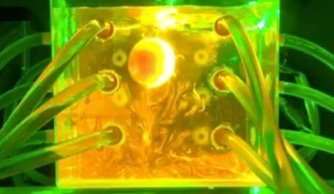The role of turbulence in environmental transport - Blair Johnson, UT-Austin
Blair Johnson, Assistant Professor in Civil, Architectural & Environmental Engineering at the University of Texas at Austin

Abstract: High levels of turbulence can increase instantaneous localized shear and in turn transport across interfaces. For example, the uprush in the nearshore can be characterized as bore-advected offshore wave-generated turbulence; resulting sediment suspension in the swash is observed to be greater than would be predicted by traditional mean shear models. To isolate the role of turbulence in transport processes, we conduct laboratory experiments in facilities with mean shear free homogeneous isotropic turbulence generated via randomly actuated synthetic jet arrays. We use particle image velocimetry and laser induced fluorescence to characterize turbulence and mass transport. We explore the boundary layer that develops when homogeneous isotropic turbulence interacts with a sediment bed, a sharp density stratification, and ice. For sediment experiments, we explore requisite turbulence levels for suspension and development of morphological features, including within-bed sediment dynamics. At a density interface, we explore conditions of flow and density that encourage mixing and generation of internal waves. For ice experiments, we evaluate how turbulence can increase melt rates at low temperatures through rapid stirring of meltwater. These various boundaries each highlight the ability of turbulence to drive evolution of critical environmental systems.

About: Blair Johnson is an Assistant Professor in Civil, Architectural & Environmental Engineering at the University of Texas at Austin. Her research focuses on environmental fluid mechanics and experimental methods. Dr. Johnson completed her B.S. (2008) at Johns Hopkins University in Civil Engineering, with a concentration in Structures and a minor in Piano at the Peabody Conservatory of Music. She attended Cornell University where she received her M.S. (2012) and Ph.D. (2016) in Environmental Fluid Mechanics & Hydrology in Civil & Environmental Engineering. In 2012 she was a visiting researcher at the Instituto de Hidraulica Ambiental (IH Cantabria) in Santander, Spain. Following graduate school, she held a Postdoctoral research position in Mechanical & Aerospace Engineering at Arizona State University from 2016-2017.
